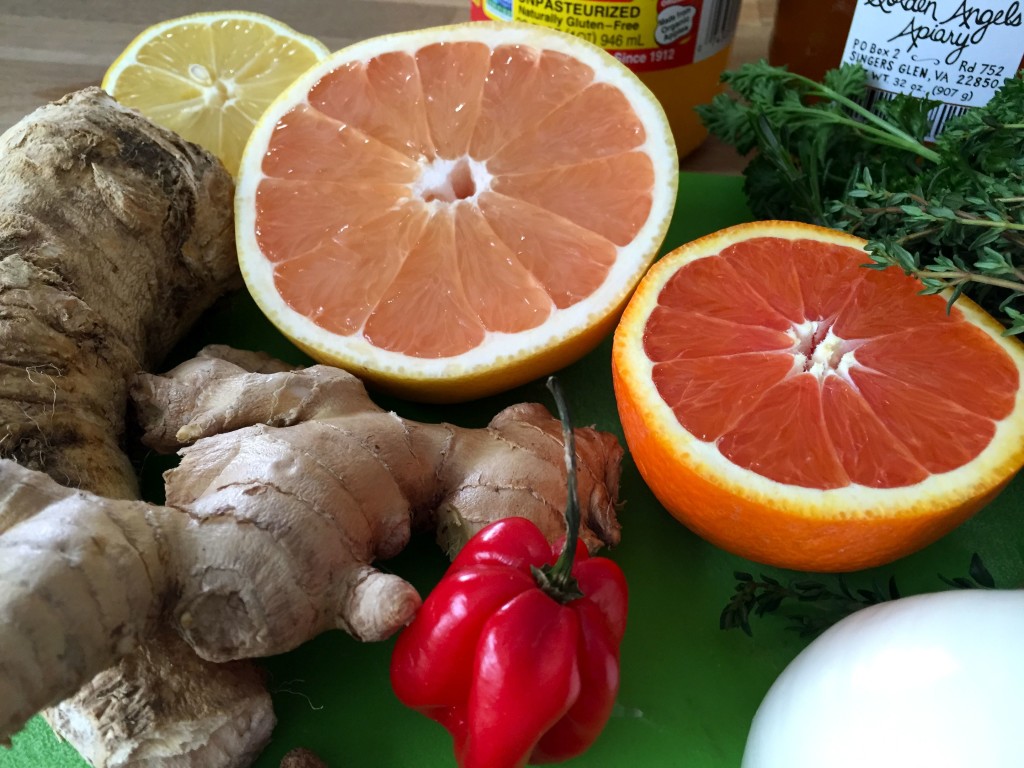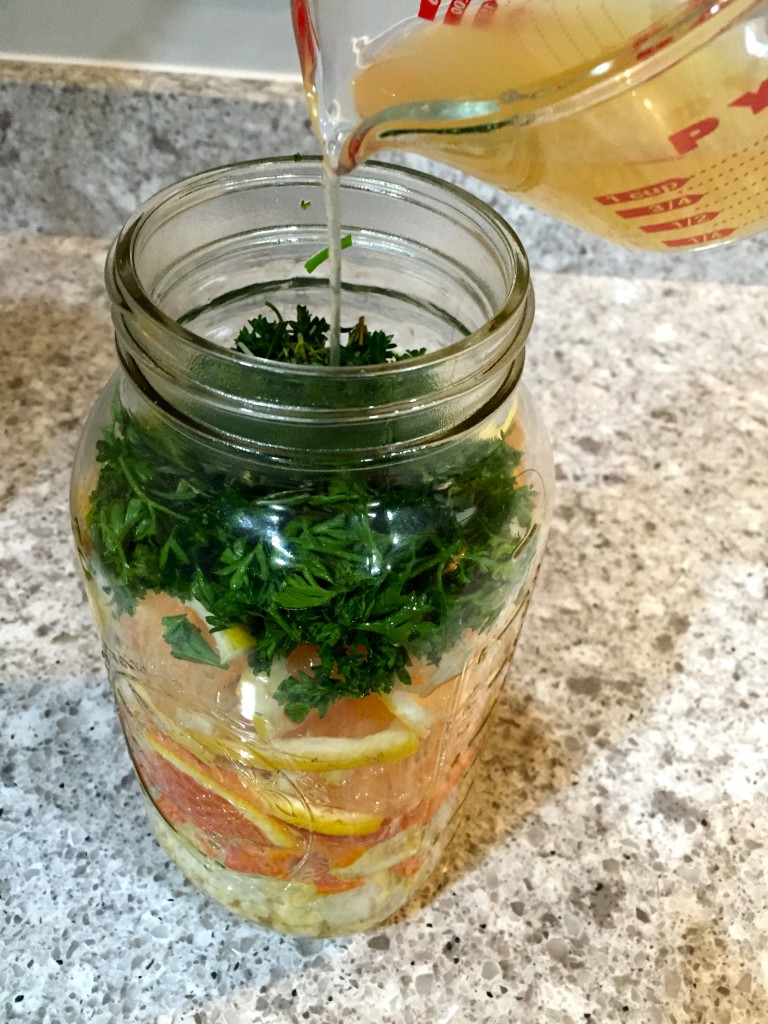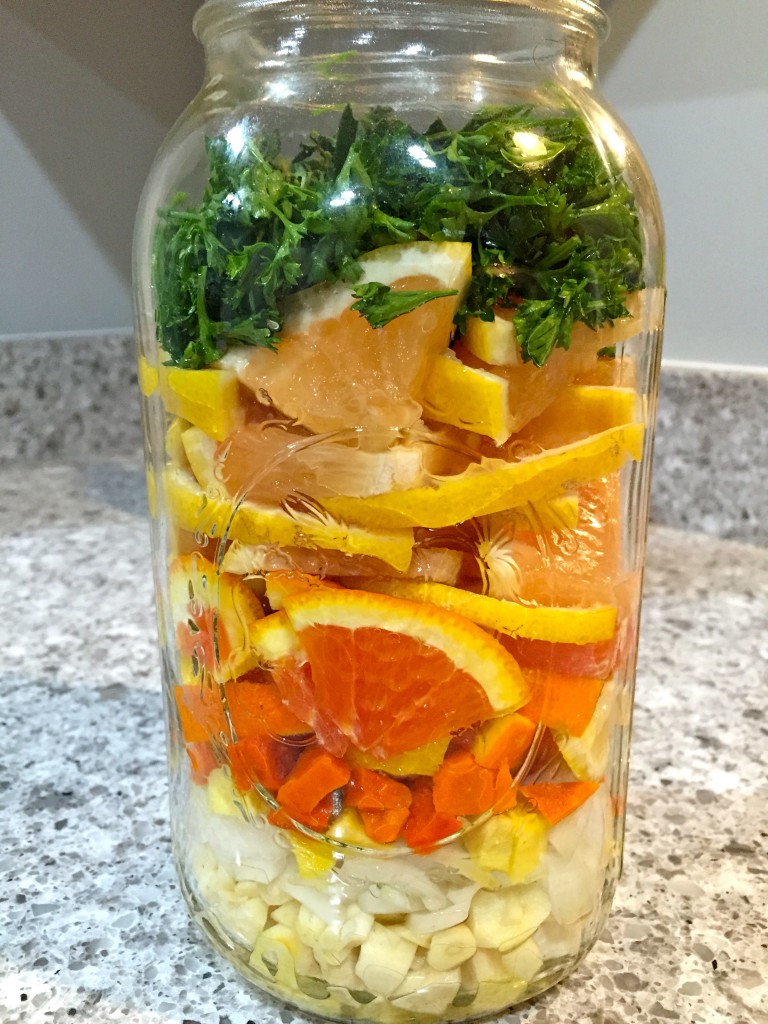 I’m sure you have someone in your office—maybe it’s you—coughing up a lung this time of year. Things are going around … and it’s not pretty. From the common cold, to the flu no shot can tame, you’re bound to come in contact with something gross.
I’m sure you have someone in your office—maybe it’s you—coughing up a lung this time of year. Things are going around … and it’s not pretty. From the common cold, to the flu no shot can tame, you’re bound to come in contact with something gross.
Capping off our month of immunity boosters, we bring you Fire Cider, an old folk remedy common in the New England area that is not for the faint of heart. It combines almost everything we’ve talked about this month—including ginger and turmeric—as well as the healing powers of horseradish, garlic, citrus, peppers, apple cider vinegar and honey. Think of it kicking that cold creeping up on you right in the gut—a sweet, sour and spicy kick! I mean, just a whiff of this stuff clears the sinuses.
Fire cider is widely known for it’s anti-viral, antibacterial, anti-inflammatory and anti-parasitic properties. Some recommend taking 1/2 ounce a day as a preventative. Others suggest doubling that dose and taking it twice a day when you feel that tickle or ache of something coming on.
 That said, if taking a straight shot of this stuff is a little too much to bear, don’t fret! You can add a little to your daily routine by adding it to hot water or tea, incorporating it into a salad dressing or marinade … or pouring it directly over greens, like kale or spinach. There are a ton of possibilities.
That said, if taking a straight shot of this stuff is a little too much to bear, don’t fret! You can add a little to your daily routine by adding it to hot water or tea, incorporating it into a salad dressing or marinade … or pouring it directly over greens, like kale or spinach. There are a ton of possibilities.
If you don’t tolerate spicy foods well, remember that the recipe below is a general guideline. You can play with the amount of hot peppers, or change the type of pepper altogether. Adding more honey will balance it out as well. I even read tips suggesting the addition of different herbs or spices, such as cilantro, cinnamon or mint. Other than the basic veggie and citrus ingredients, feel free to play depending on your tastes.
Truth be told, I had never heard of fire cider before starting our research. It has now earned a place in my winter arsenal of cold fighters. It takes very little prep, but be prepared … this little concoction takes some patience: The brew has ferment for about a month while the apple cider vinegar soaks up all those good-for-you properties. Never fear—once you finish prep, all you have to do is remember to shake it each day to keep things moving. I recommend starting two batches in the Fall: double your arsenal AND try two different flavor profiles!
As a last resort—or if you’re feeling lazy (or you want to know what you’re getting yourself into!)—you can order some pre-made fire cider. The site also includes has a good FAQ and blog with suggested uses and recipes.
But, trust me … making this is much easier than keeping that Tamagatchi alive.
This month, we’re giving away a copy of Sally Fallon Morell’s latest cookbook, Nourishing Broth? All you have to so is join The Peppercorn Press, our monthly newsletter, for a chance to win. Entries will be open through Monday, March 2nd. The winner will be announced in our March edition.
Fire Cider
I followed a recipe on the kitchn. It’s easy to adjust if you don’t like a lot of heat – try cutting back on the amount of pepper or try a less spicy variety. And if you like sweeter, add more honey at the end.1/2 cup horseradish, peeled and diced
1/2 cup garlic, peeled and diced
1/2 cup white onion, peeled and diced
1/4 cup ginger, peeled and diced
1/4 cup turmeric, peeled and diced
1 habanero chile, split in half
1 grapefruit, quartered and sliced
1 orange, quartered and sliced
1/2 lemon, quartered and sliced
1/2 cup fresh parsley, chopped
2 tablespoons fresh rosemary, chopped
2 tablespoons fresh thyme, chopped
1 teaspoon black peppercorns
2 to 3 cups raw unfiltered apple cider vinegar (at least 5% acidity)
1/4 cup raw local honey, or more to tastePlace all the veggies, fruit, herbs and spices in a clean 1 quart jar. Fill with the apple cider vinegar, covering allingredients. Make sure there are no air bubbles and cap the jar.
Tip from the kitchn: If using a metal lid, avoid corrosion from the vinegar by placing parchment or wax paper between the lid and the jar.
Shake the jar well to mix everything together.
Let it sit for 3 to 6 weeks in a cool, dark cabinet—not direct sunlight. Shake daily. When done, strain the vinegar into a new, clean jar or other well sealed container. Add honey to taste. Refrigerate for up to a year!




